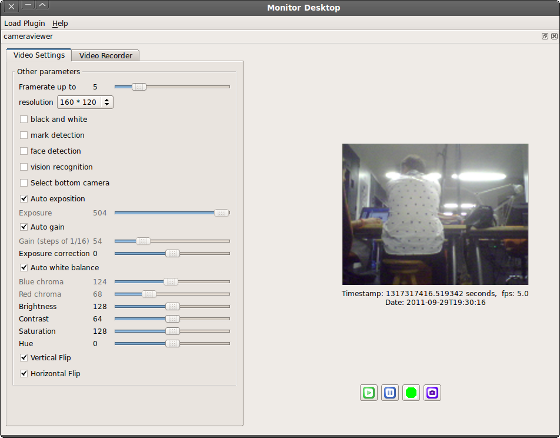
Video Viewer Tutorial Movie Project By
Filmora gives you a helping hand to get started with any new movie project by importing and editing your video, adding special effects and transitions, and sharing your final production on social media. ReportViewer is a freely redistributable control that enables embedding reports in applications developed using the. Reports are designed with drag-and-drop simplicity using Report Designer included in Visual Studio 2010. See screenshots of some applications that have ReportViewer control embedded in them.File Viewer Lite is a universal file opener that allows you to open over 150 file types your Windows PC.
✓ File Viewer Lite for Windows contains file type information from FileInfo.com. File Viewer Lite can open PDFs, word processing documents, spreadsheets, and many other common file types in their native view. It also can play dozens of audio and video file formats.With these user-friendly tutorials, you will learn the basics and more.
Video Viewer Tutorial Code It To
FFMPEG Audio Encoder can intake any media file that has audio and encode it to the codec/settings of If you have a unknown file, File Viewer Lite can open it! In the rare case that File Viewer Lite does not natively support the file format, you can still view the contents of any file in text or hexadecimal view.Learn how to setup and use the new native recording and streaming features of ProPresenter 7.1 View more tutorials and training at. DeckLink Duo 2: Setup & Configuration Learn how to setup and configure the DeckLink Duo 2 to work with ProPresenter to send alpha keyed lyrics, receive video inputs and connect to Atem switchers.SKYBOX is the ultimate VR player with powerful features and elegant interfaces. It supports any every video formats, of any video type (2D, 3D, 180.File Viewer Lite Overview Watch the video to learn more about File Viewer Lite.
Initial versions of these files are available in the LVA-gateway GitHub repository. If you're using a real camera, you need connectivity between the IoT Edge device and the camera, and you need the Real Time Streaming Protocol channel.In these tutorials, you update and use several configuration files. If you don't have an Azure subscription, you can create one on the Azure sign-up page. Add a gateway device to your IoT Central applicationTo complete this tutorial series, you need: Create a device template for an IoT Edge gateway device Use the Azure IoT Central video analytics application template to create a retail store application
Scratchpad.txt - this file helps you record the various configuration options you need as you work through these tutorials. Then right-click on each of the following links and choose Save as to save the file into the lva-configuration folder: This file helps you complete later steps in the tutorials.Create a folder called lva-configuration on your local machine to save copies of these files.
If you lose it, you have to generate another secret. Make a note of this information in the scratchpad.txt file, you use it later when you configure the IoT Edge device.This is your only chance to view and save the secret. You can copy all the credential information from here in one go. Create a new Azure Active Directory app with the same name as your Media Services resource, and create a secret with a description IoT Edge Access.When the secret is generated, scroll down to the Copy your credentials to connect your service principal application section. Select API access and then Service principal authentication. You can use your closest region if you prefer.Make a note of your Media Services account name in the scratchpad.txt file.When the deployment is complete, open a Cloud Shell and run the following command to retrieve the Resource ID for your media service account: az resource list -resource-group lva-rg -resource-type microsoft.media/mediaservices -output table -query "."Make a note of the Resource ID in the scratchpad.txt file, you use this value later when you configure the IoT Edge module.Next, configure an Azure Active Directory service principal for your Media Services resource.

You use this primary group shared access signature token later when you configure the IoT Edge device. After the dialog closes you can't view the token again.In the Administration section, select Device connection, and then select SAS-IoT-Devices.Make a note of the Primary key for devices in the scratchpad.txt file. The IoT Edge device needs this information to register with, and connect to, the application.In the Administration section, select Your application and make a note of the Application URL and the Application ID in the scratchpad.txt file:Select API Tokens and generate a new token called LVAEdgeToken for the Operator role:Make a note of the token in the scratchpad.txt file for later. This tutorial uses three devices - two cameras and an IoT Edge device - so if you don't use the free trial you'll be billed for usage.For more information about directories, subscriptions, and locations, see the Create an IoT Central application.Later in this tutorial when you configure the IoT Edge gateway, you need some configuration data from the IoT Central application.



 0 kommentar(er)
0 kommentar(er)
